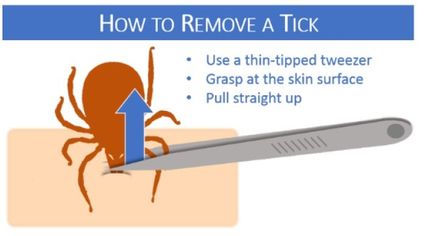TICK SEASON
April 22, 2021
The warmer weather of spring brings not only people out into the woods of Northwest Montana, but also ticks. People and pets throughout Sanders County have already been spotting ticks in the outdoors.
Some residents who have already in the outdoors have said they have noticed more ticks than usual this year. The National Weather Service predicts that tick season (April through October) temperatures will be above normal, with less precipitation. According to the website Pests.org, those conditions will make ticks and their hosts more active and widespread.
Dr. Abby Ingram from Thompson Falls Veterinary said ticks can transmit diseases such as Lyme disease, Rocky Mountain Spotted Fever and Ehrlichia. The female ticks lay hundreds to thousands of eggs, and ticks can infest humans and animals during any of the parasite's life stages.
Although ticks favor wooded areas, Ingram said they can also infest indoor environments such as homes and kennels. Removal of ticks is fairly easy as just their mouthparts penetrate the skin. Ingram says to grasp the tick between a pointer finger and thumb at the level of the skin and pull straight out. Do not twist the tick to "unscrew" it from the skin, she advises, and do not try to burn the tick off the animal.
Tick (and flea) preventive medications such as Advantix (topical) and Credelio (oral) can be used once monthly on pets.
PREVENTING TICK BITES
Public health officials emphasize a three-step approach to prevent tick bites:
LIMIT: Ticks live in wooded, brushy, or grassy areas so walk in the center of trails and mow your property where you and your pets spend time.
REPEL: Wear long, light-colored pants and socks to spot ticks more easily and use insect repellents. Those repellents containing up to 30% DEET can be used on the skin or clothing. Repellents with lower DEET concentrations might need to be applied more frequently. Repellents containing permethrin can be used on clothing, but not on skin. One application to pants, socks, and shoes may be effective through several washings.
INSPECT: Check your skin carefully for ticks after returning from outdoor activities especially if you were in wooded, brushy, or grassy areas. Common hiding places for ticks are the scalp, beard, back of the knees, armpits, groin, back of the neck, and behind the ears. De-ticking clothing is best done by throwing clothes into a drier on high for 10 minutes, even before washing.
Source: DPHHS.mt.gov
Tickborne Diseases
State and local health departments report cases of tickborne diseases to the CDC. Below is the number of cases reported by year in the United States.
Reported Tickborne Diseases, U.S. 2016 2017 2018
Lyme Disease (confirmed and probable) 36,429 42,743 33,666
Anaplasmosis/Ehrlichiosis 5,750 7,718 6,123
Spotted Fever Rickettsiosis 4,269 6,248 5,544
Babesiosis 1,910 2,368 2,160
Tularemia 230 239 229
Powassan virus 22 33 21
Total 48,610 59,349 47,743







Reader Comments(0)